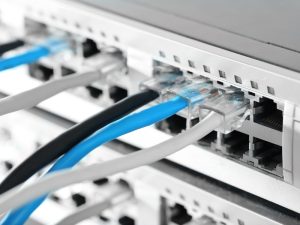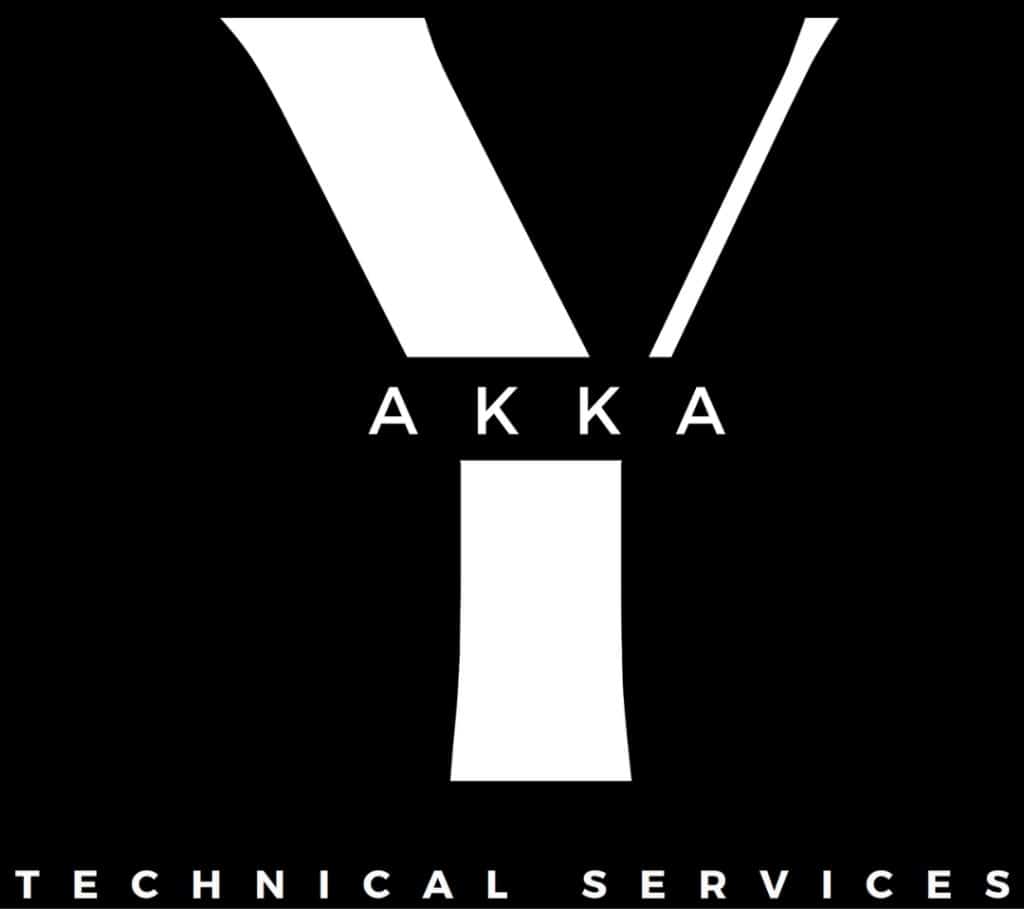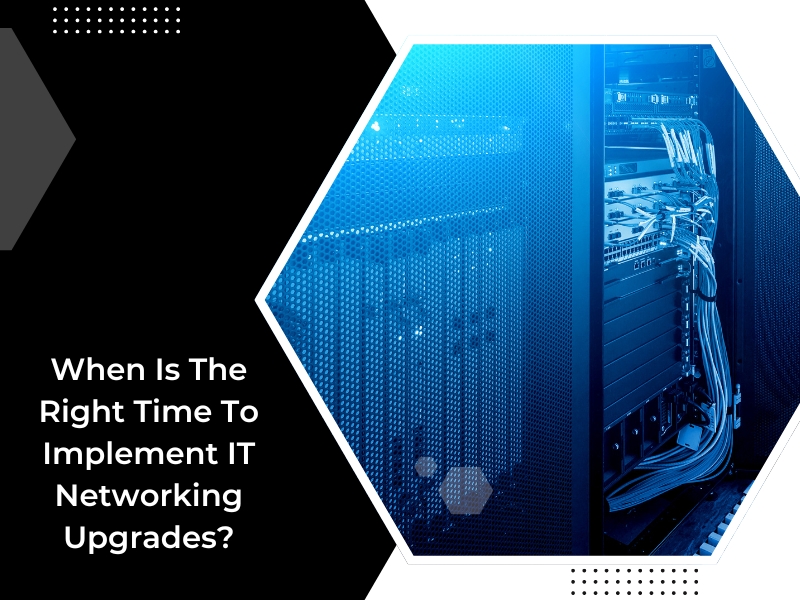The digital age demands reliable and efficient networking systems, particularly for smart homes and business environments. As technology advances, robust IT networking becomes even more critical. But when exactly is the right time to consider an upgrade? This guide will explore the signs, risks, benefits, and best practices for implementing IT networking upgrades.
How can you tell if your network needs an upgrade?
It can be challenging to determine if a network has reached its limits. However, sure signs can help you decide when to make changes.
- Frequent network downtime: Regular disruptions or slowdowns in your network can be frustrating and costly. These downtimes could indicate that your current system is overwhelmed or outdated. A poorly designed network topology can also contribute to frequent network downtime and security vulnerabilities.
- Security breaches or vulnerabilities: It may be time to upgrade if you experience repeated security breaches. Newer systems often have enhanced security features that protect against the latest threats.
- Limited scalability: When your network cannot support additional devices or services, it indicates the need for an upgrade. This is particularly relevant in smart homes and businesses with growing tech demands.
- Obsolete hardware or software: Outdated hardware and software can cause compatibility issues and performance bottlenecks, necessitating a timely upgrade.
- Increased maintenance costs: If your existing network becomes expensive, upgrading is more cost-effective.
Understanding why your network performance is slower than usual can help identify the best solutions for improving speed and efficiency.
What are the risks of delaying network upgrades?
Delaying IT networking upgrades can lead to several risks impacting homeowners and businesses. Understanding these risks can help you make more informed decisions.
- Increased vulnerability to cyber attacks: Older networks are more susceptible to cyber attacks due to outdated security protocols and a lack of updates.
- Reduced productivity: Slow networks or frequent downtimes can severely impact productivity at home or in a business environment.
- Higher long-term costs: In the long run, repeatedly fixing network issues can exceed the price of a complete upgrade.
- Compatibility issues with new devices: Older networks may need help supporting newer devices or smart home systems as technology advances.
- Negative impact on customer satisfaction: Poor network performance can affect business customer experience, leading to potential revenue loss.
When should you consider upgrading your IT networking infrastructure?
Timing is crucial when it comes to implementing IT networking upgrades. Here are some scenarios when an upgrade becomes essential:
- Planning a smart home integration: Adding multiple devices is the perfect time to upgrade your network to support increased data traffic.
- Expansion of business operations: Expanding your business or adding new office locations often requires a robust and scalable network infrastructure.

- After a security breach: If your network has been compromised, upgrading immediately can help prevent further breaches and enhance security.
- When adopting new technologies: Implementing new technologies like artificial intelligence, smart home automation, or cloud computing necessitates a network upgrade to ensure compatibility and optimal performance.
- Regular review milestones: Experts recommend reviewing your network infrastructure every 3-5 years to assess its performance and decide on potential upgrades.
What benefits can you expect from upgrading your network?
Upgrading your IT networking infrastructure has numerous benefits that can enhance residential and commercial settings.
- Improved performance and speed: A network upgrade can significantly enhance speed and reduce lag, ensuring smoother operation of smart home devices or business systems.
- Enhanced security features: New networking solutions often have built-in security enhancements, providing better protection against cyber threats.
- Greater scalability and flexibility: Upgrading allows for future expansion, whether adding more smart devices at home or expanding business operations.
- Lower maintenance costs: Modern networks are typically more accessible and cheaper to maintain, reducing long-term costs.
- Better support for smart home and business automation: Enhanced networking capabilities ensure that smart home automation systems work seamlessly, providing greater convenience and control.
How can you plan for a seamless IT networking upgrade?
Planning is vital to ensuring that your networking upgrade is smooth and hassle-free. Here are steps to consider:
- Conduct a network assessment: Evaluate your current network’s performance to identify weaknesses and areas that need improvement.

- Set clear objectives: Understand what you want to achieve with the upgrade, whether it’s improved security, scalability, or performance.
- Create a detailed budget: Ensure you account for all costs, including new hardware, software, and potential downtime during the upgrade.
- Choose the right technology: Based on your needs, select the most suitable networking technology, such as wired or wireless.
- Test before full deployment: Implement upgrades in phases to test new systems without disrupting the entire network.
- Hire experts: Engaging professionals can help ensure a smooth transition with minimal disruption.
Should you outsource your IT networking upgrades or handle them in-house?
Deciding whether to handle IT networking upgrades in-house or to outsource can take time and effort. Here are some points to consider:
- In-house expertise: If you have an experienced IT team, managing upgrades internally might be feasible. However, outsourcing can be more effective for specialised needs.
- Cost-effectiveness: While in-house upgrades may seem cheaper, outsourcing can save money in the long run by avoiding costly mistakes and delays.
- Access to advanced tools and technologies: Outsourcing to a professional company ensures access to the latest tools and technologies.
- Risk management: External experts can help mitigate risks associated with upgrades, such as data loss or extended downtime.
- Focus on core activities: Outsourcing allows you to focus on core business activities without worrying about network management.
How often should you review and upgrade your IT networking?
Regular reviews are crucial to maintaining an efficient and secure network. Here’s a guideline on how often you should consider reviewing and upgrading:
- Every 3-5 years: To keep up with technological advancements, your network infrastructure should be reviewed and upgraded every 3-5 years.
- After major cyber attacks: Immediately review your network to identify vulnerabilities if you experience a security breach.
- When integrating new devices: Anytime you add many new devices, consider reviewing your network capacity and performance.
- Annual security audits: Conduct yearly security audits to ensure your network’s defences are current.
- When performance drops: If you notice significant drops in network performance, it’s time for a review, even before your regular schedule.
Why choose Yakka Technical Services LLC for your IT networking needs?
Yakka Technical Services LLC can help if you want to upgrade your network. As an award-winning distributor and expert in smart home and business automation, we offer comprehensive services that include network design, installation, and maintenance. Our team’s commitment to exceptional service and professionalism ensures you receive the best networking solutions tailored to your needs. With Yakka Technical Services, you can confidently have a seamless and secure IT networking experience to support all your smart home or business automation goals. Reach out to Yakka Technical Services today to learn how we can elevate your network for a more innovative future.


